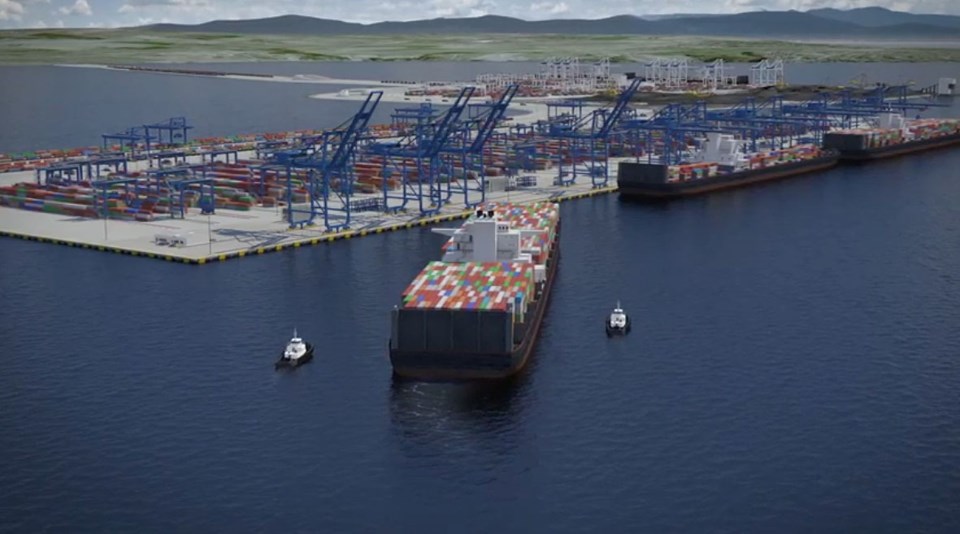The citizens’ group Against Port Expansion (APE) continues its push for the federal government to turn down the Port of Vancouver’s proposed Terminal 2 (T2) project at Roberts Bank.
In a recent newsletter, APE stated it wanted to dispel several port-generated “myths” including the port’s assertion the proposed man-made island for the terminal would not impact the sensitive ecosystem because it would be built in deeper water, away from shores and habitats.
APE said the reality, in fact, is that it will impact the ecosystem by altering tidal flows, water temperatures and salinity fluctuations, reducing the polyunsaturated fatty acids and Omega 3 in biofilm.
APE also noted Environment Canada scientists stated the project’s impacts on biofilm, which is a critical food source for millions of shorebirds, “are anticipated to be high in magnitude, permanent, irreversible, and continuous”.
APE said biofilm can’t be re-created on a large scale to replace any biofilm that is lost and that mitigation for that habitat loss is not possible.
The newsletter lists a series of environmental concerns when it comes to the impacts of the project, stating, “There is no point in the Port providing more of its paid-for consultants’ developed science to the Minister. None of that science has been published in peer-reviewed science journals and much of it runs counter to the scientific community’s findings that the Fraser Estuary is part of an already observed and wider biodiversity collapse in the Salish Sea, driven by projects like Roberts Bank Terminal 2.
The Fraser Estuary is on the brink of collapse and Roberts Bank Terminal 2 will likely be the tipping point…”
As far as the business case for Terminal 2, current planned expansions elsewhere will provide plenty of capacity for decades to come, added APE.
The port wants to build a three-berth container facility on a new man-made island adjacent to the exiting port, an application that’s been many years in the making.
A decision was expected by the federal government late last year but that was all paused last summer as additional information had been requested from the port authority.
At a presentation at Delta council this April, Tom Corsie, the port’s vice-president of real estate, and Duncan Wilson, vice-president of environment, community and government affairs, said the project is needed to meet future container capacity demand.
They also detailed extensive environmental mitigation measures that would be part of the project including the creation of new areas for biofilm, if needed, for feeding migratory shorebirds.
“The project has also been designed to incrementally deliver a total of 2.4 million TEUs of capacity, 20-foot equivalent units, 1.6 million TEUs as part of the initial commissioning in 2031 and approximately 800,000 TEUs of capacity to be made available once it is required by ongoing growth, expected in around 2035,” Wilson explained.
Wilson noted that by building the land mass all at once and adding capacity when needed, the port will minimize the effects of multiple construction phases on the environment.
He added that an independent federal review panel agreed with their assessment that the entire capacity of the project will be needed in the future.
Wilson also noted all additional information requested by the federal government, including the viability of a number of the review panel’s recommendations, will be submitted this summer.
Consultations will then take place on that information and decision is expected by the federal government later this year.
Meanwhile, the port authority says it is continuing field studies as part of ongoing environmental and technical work for the T2 project




